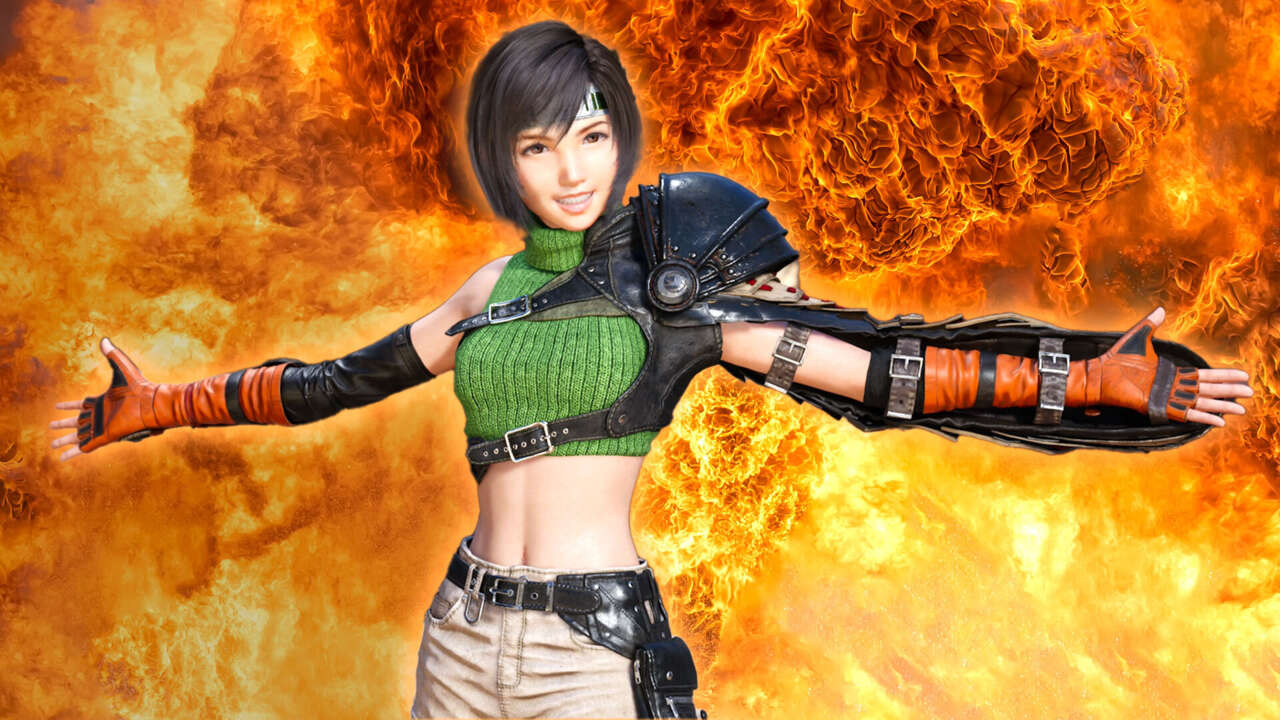With No Rest for the Wicked, Moon Studios Is Moving From Its Mario to Its Zelda – IGN First
The Ori games have always felt like something of a big deal. That’s in part thanks to the backing of Microsoft Studios, which published both The Blind Forest and The Will of the Wisps initially as Xbox console exclusives. The shine of that exclusivity drew people to Ori’s quality, and by the time the games were released on other platforms it was common knowledge just how talented developer Moon Studios was. It’s a reputation that somewhat betrays the reality that the first Ori game was built by just a couple of handfuls of staff. The studio is small. Or it was small, at least to begin with.
Today, Moon Studios is pretty sizable for an indie developer, and currently at work on its most ambitious project yet: No Rest for the Wicked, an action RPG with striking visuals, precise combat, and online multiplayer. It’s a huge leap for the company, and so as part of this month’s IGN First we caught up with Moon Studio’s co-founders to discuss moving forward from Ori’s success and into the challenging waters of sprawling worlds, fantastical lore, and early access development.
“I always saw Ori as our Mario,” says Moon Studio’s co-founder, CEO, and creative director, Thomas Mahler. “Because, even though it was a Metroidvania, the platforming focus was so big in that game. […] Then I was really excited about the idea of ‘What happens if Moon Studios, with our art style and all of that, would take on something like Zelda?”
That tantalising prospect is the genesis point for No Rest for the Wicked. Mahler and his team began working on it right after completing development on Ori and the Blind Forest: Definitive Edition, but quickly realised that it wasn’t the right time to make their RPG Moon’s next release.
“We didn’t quite feel that we were ready to take on online multiplayer, PvP, a full-blown RPG in 3D,” recalls Gennadiy Korol, Moon Studios’ co-founder and its director of technology. “That is a very, very difficult thing to do as a studio, so we felt that we needed to grow a bit more. We needed to learn a little bit more.”
And so Moon went off to work on a sequel to Ori, the Will of the Wisps. Well, most of Moon. In the background, a very small group of creatives continued to tinker away on their epic fantasy project. And while they tinkered, Moon Studios grew. Ori and the Blind Forest was built by around 20 people. Will of the Wisps saw the studio grow to almost 60 staff. Today, it’s a group over 80 strong. “It’s a whole new era for our studio, for sure,” says Mahler.
Entering that new era meant that Moon Studios was finally ready to make its dream RPG. With the completion of Will of the Wisps’ Switch and Xbox Series editions, the entire company – with all its newly accumulated knowledge, wisdom, and experience – shifted across to No Rest for the Wicked. But while bigger, stronger, and wiser, this evolved version of Moon Studios still had plenty of challenges ahead of it. That began with the fundamentals.
“We built our own engine for [No Rest for the Wicked], for the networking of it,” explains Korol. “We had to re-envision all the art pipelines, all of the asset pipelines. Everything was basically redone from scratch in full 3D.”
Despite so much having to start again from scratch, Korol notes that there are many “interesting parallels” between Metroidvanias and action RPGs, meaning that much of what was learned making Ori was transferable to work on No Rest for the Wicked. Mahler points to Ori’s fully connected world, the philosophy for which also underpins Wicked’s level design. “We went through the paces on that twice,” he says. “We spent a decade working on the Ori games, and doing the really hard things to actually get us into the groove of how we now build a game like this.”
But things go deeper than just creative parallels. In one instance, Moon actually developed systems for Ori as something of a prototype for an idea it wanted in its forthcoming RPG. “We had this little metagame section [in Will of the Wisps] called the Wellspring Glades,” says Mahler. “There were NPCs there, and you could help them out. You could help them make the Wellspring Glades a nicer place. A lot of these things we, even back then, created because we knew we were going to do this in a much bigger way for No Rest for the Wicked.”
With that in mind, it’s clear that much of what fans loved about Ori will form the basis for No Rest for the Wicked, despite the change in genre. That will hopefully make for an action RPG that feels very different to its peers.
“There was always this unwritten rule that ARPGs needed to be procedurally generated, and I always doubted that,” says Mahler. “Because, if I looked at the results that we got, the worlds didn’t really feel that different. To me, level design is really important.
“I worked for a decade on the Ori games, where everything was about level design, and it feeling super fun to be in that world. I wanted to apply the same thing for No Rest for the Wicked. I want to handcraft everything.”
While No Rest for the Wicked’s world isn’t procedurally generated akin to vast stretches of Diablo’s Sanctuary, Korol promises an endgame where the experience feels “varied, and different, and challenging, even though you’re revisiting this handcrafted world.” It’s unclear what he means by that right now, but it’s easy to imagine repeated runs of areas that have been altered by varying parameters and remixed enemies.
But challenging and varied gameplay isn’t the only thing that keeps people coming back to ARPGs. As with any style of role-playing game, artistic design and worldbuilding are vital hooks, and Moon Studios takes this as seriously as any other part of the project. The trailer features a balanced mix of the fresh and familiar, from Soulsian horrors to strange new armour designs that encase its Inquisition soldiers. Running through all this is a believable sense of darkness – a visual tone that many will recognise from one of the best-loved fantasy book series of all time, plus its HBO adaptation.
“Song of Ice and Fire, I think, is the biggest inspiration,” says Korol. That much is clear from its cast of characters, who appear in shades of Cersei Lannister and Jon Snow. But this is also a story of dead kings and the war for succession, the same historically-inspired plot points that are the engine of George R.R. Martin’s tales.
Mahler points to a much older source of inspiration, though. “It was really about building this Shakespearean tale,” he says. “Because, with Ori, we already created these smaller, allegorical tales where we introduced these characters, and somehow still managed to make people really connect with those characters and feel emotionally attached to them.
“This time it was, ‘Okay, let’s go from this almost Disney-esque, Ghibli-esque thing to now let’s do an epic fantasy saga with humans,’ where there’s all these characters that have their own dilemmas.”
“I think worldbuilding is hugely important for us,” says Korol. “It’s also having these characters have interesting conflicts, and story arcs, and ambiguous moral questions that we’re dealing with. Actually challenge the players, and have them think about what’s right and what’s wrong.”
No Rest for the Wicked is a story of significant shifts for Moon Studios. The shift from Metroidvania to action RPG. The shift from 2D to 3D. The shift from Disney-like to Game of Thrones-like. These shifts even extend into the way the game will be released; this time around, Moon Studios is heading down the route of early access.
“I think we knew that this was how we wanted to make games,” says Korol. He explains how creating the Definitive Edition of Ori and the Blind Forest allowed the team to respond to and build upon player feedback gathered from the original launch. The studio had the opportunity to do this again with Ori and the Will of the Wisps, implementing feedback-informed changes into the Switch and Series X/S versions that were released several months after launch.
“For us as creators, that really is fun,” Korol says. “This is why we wake up in the morning, is to see how other people play these games. It’s to make them happy. If there’s anything that we can improve, we are optimisers at heart. It’s the process of optimization and constant improvement.”
With this in mind, it’s easy to see why Moon Studios has been attracted to early access as a development strategy. It’s currently unclear how it plans to implement it, though. Developers that have famously used the approach to great effect, such as Supergiant Games with Hades and Larian Studios with Baldur’s Gate 3, have used different strategies in the build up to a full launch. However, that full launch is typically always greatly benefited by months or even years of player feedback. We’ll learn how Moon Studios intends to go about that as part of Wicked Inside, which airs at 9am PT on March 1.
However it proceeds, it’s clear that Moon Studios has huge ambitions for No Rest for the Wicked. And while it’s a project that demands the team heads into uncharted territory, it appears that – at the very least – they have the right attitude towards this bold new swing.
“I’m a big believer in allowing the art to tell the artist where it wants to go,” says Mahler. “It just became really clear to me and to the rest of the team that, ‘Man, if we do this right, if we actually take all these things and put them together, this could become pretty incredible.’”
Matt Purslow is IGN’s UK News and Features Editor.
Check out our Latest News and Follow us at Facebook
Original Source







